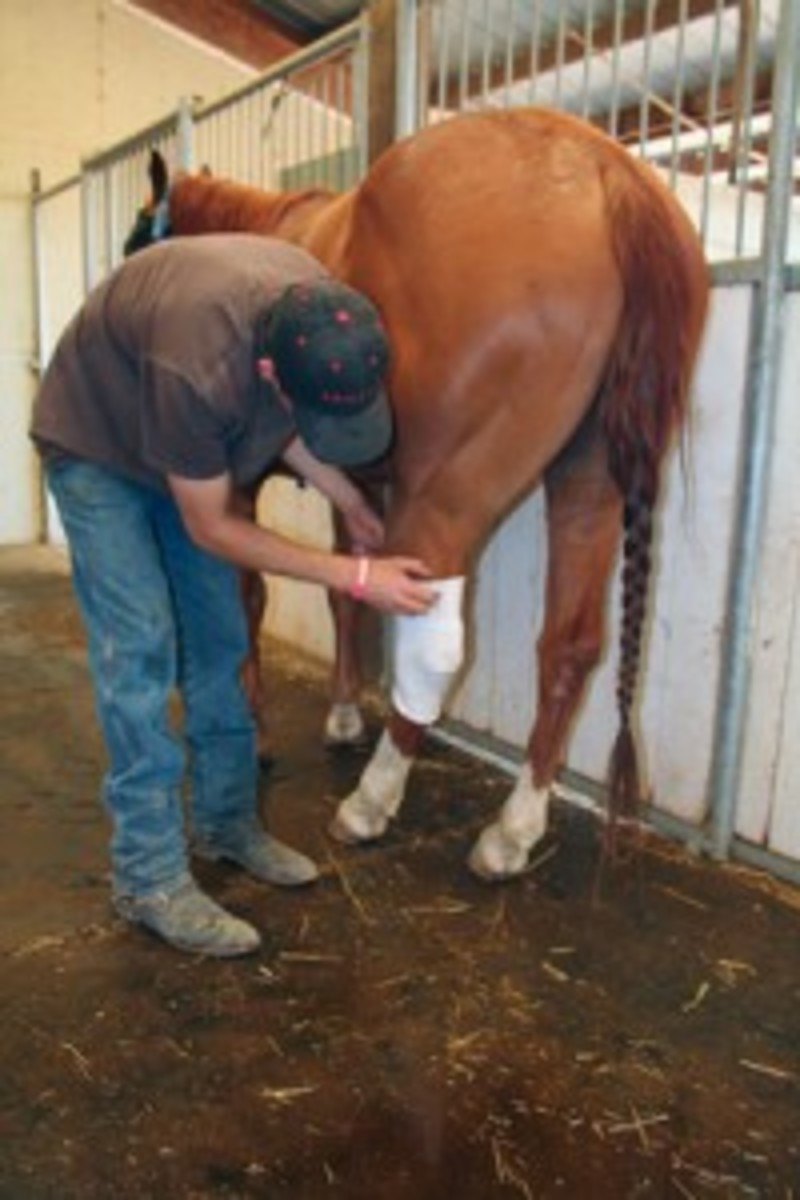Wounds involving the hock area of a horse can be troublesome to deal with. The hock has so much motion with its extension and flexion that sutures by themselves tend to pull out. As with wounds of the lower leg in general, supportive bandaging of hock wounds is an important aid in healing. However, the anatomy of the horse’s hock makes bandaging somewhat of a challenge. I would like to discuss some considerations dealing with these hock wound problems.

The cause of a hock wound has a lot to do with the treatment. I used to see more massive wounds on the flexor (anterior) aspect of the hock due to horses getting a leg caught in a wire fence. With changes in the type of fencing, I see less of these hock wounds now, and that’s a good thing. Those wounds resulted in ragged skin edges with devitalized tissue. Suturing those types of wounds is pretty unproductive, in my opinion. Keeping medication on the wound with some flat pressure seems the best approach to encourage healing with the least amount of scarring.
Another type of hock wound results from horses lying down and getting up on hard ground. Because horses get up front end first, some horses will traumatize the lateral aspect of the point of the hock. Changing the environment the horse lives in may be necessary with certain horses to avoid a chronic problem. That means soft bedding where the horse lies down. However, once a wound is created in this area some protective bandaging is necessary to facilitate healing.
I have come to use a long cotton sock to place over the dressing and medication that’s on the wound. I find that one can maintain a flat, supportive pressure in place with this simple and inexpensive approach. I also feel you avoid the possible complications with pressure points that can occur with bandaging materials that are wrapped around the leg.
I simply cut the toe off a long cotton sock, and pull the sock up the leg and over the hock, and the topical dressing, with the heel of the sock over the point of the hock. This procedure, like any other procedure done on a horse, can and should be done in a gentle and considerate manner. Avoiding conflict and apprehension in the horse pays big dividends down the road.










